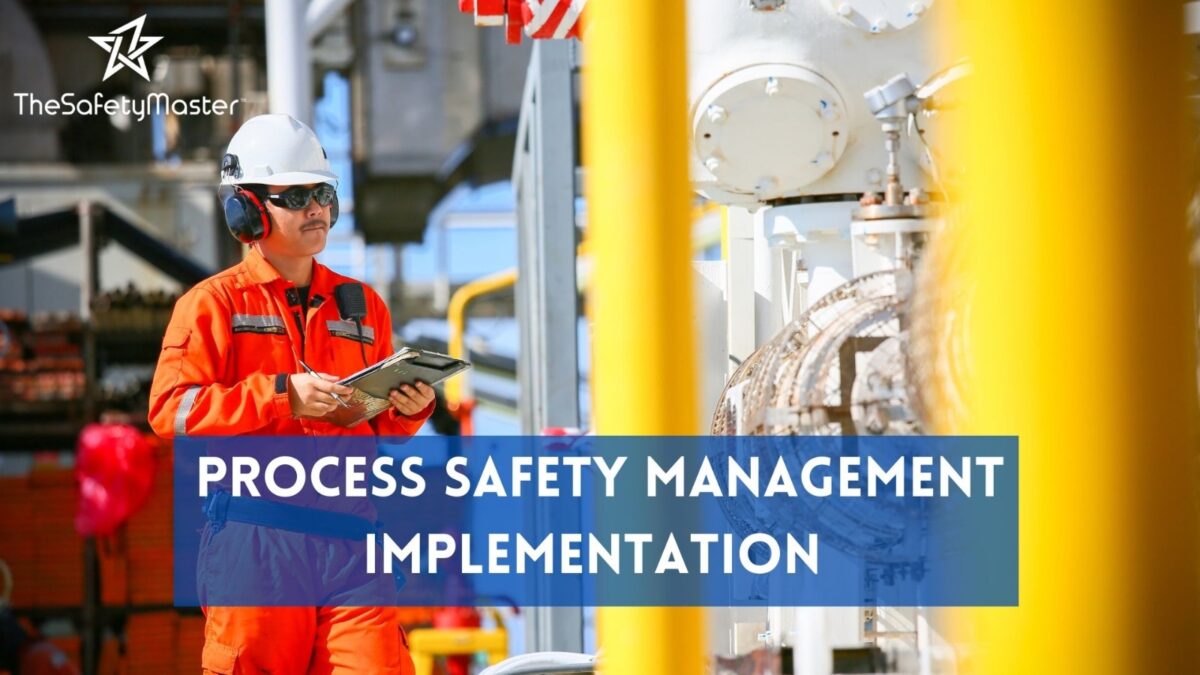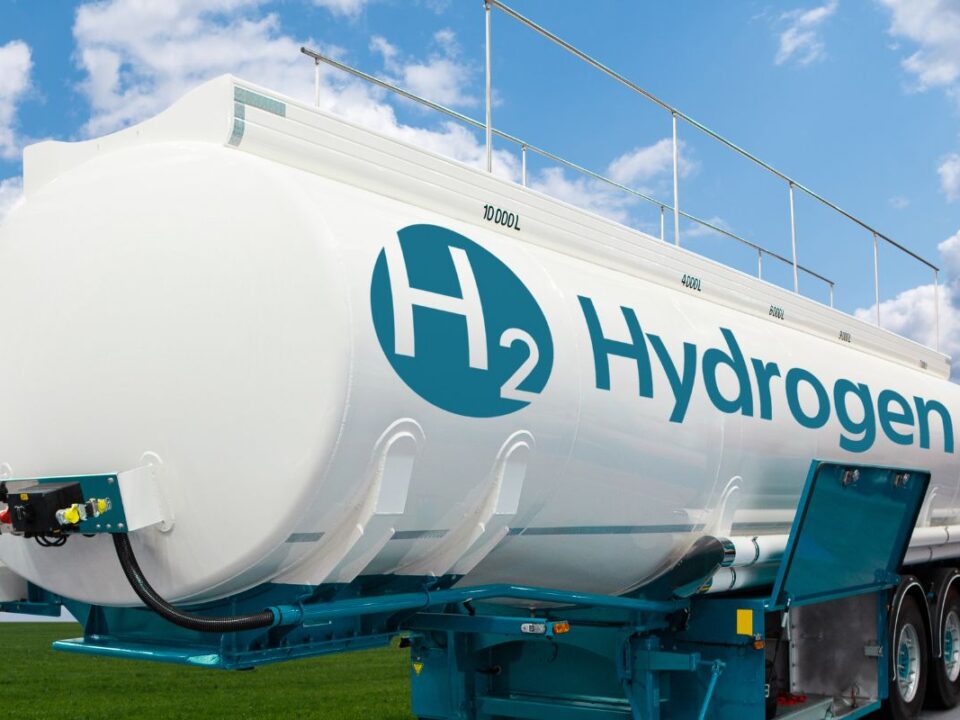How Process Hazard Analysis Elevates Safety Standards in Indian Process Industries

Bridging the Gap: Implementing Behaviour-Based Safety for a Safer Manufacturing Workplace
December 30, 2023
The Power of Positive Reinforcement: Transforming Workplace Culture through Behaviour Enhancement
January 4, 2024In this article, we delve into the critical topic of how Process Hazard Analysis (PHA) is revolutionizing safety standards within the Indian process industries. With a primary focus on enhancing workplace safety and averting potential catastrophes, PHA provides a systematic approach to identifying, evaluating, and mitigating hazards. As we unravel the layers of this indispensable methodology, we will uncover its significance in preventing accidents, safeguarding industry workers, and fostering a culture of safety across various sectors. Prepare to gain valuable insights into the powerful impact that PHA can have on the future of safety in Indian process industries.
Introduction
In the realm of safety, vigilance is paramount. In Indian process industries, where complex operations and hazardous substances are prevalent, ensuring the utmost safety is not just a legal requirement but a moral obligation. This is where Process Hazard Analysis (PHA) emerges as a vital tool in elevating safety standards to unprecedented levels.
Embarking on a journey towards enhanced safety measures, it becomes imperative for process industries in India to understand the significance of PHA and its impact on their operations. In this article, we delve into the world of PHA and explore how it can revolutionize safety practices within these industries. So, fasten your seatbelts as we unravel the intricacies of Process Hazard Analysis and unveil its potential to transform India’s industrial landscape
Importance of Process Hazard Analysis in Indian Process Industries
In the realm of Indian process industries, the importance of Process Hazard Analysis (PHA) cannot be overstated. This proactive approach to identifying, evaluating, and mitigating potential hazards plays a crucial role in elevating safety standards. By systematically analyzing processes and pinpointing vulnerabilities, PHA empowers industry professionals to develop robust strategies that prioritize safety. Process Hazard Analysis serves as a cornerstone for risk management in Indian process industries, ensuring that potential hazards are identified and addressed before they transform into catastrophic incidents. With a focus on prevention rather than reaction, PHA enables organizations to proactively assess their manufacturing processes, identify possible risks, and implement appropriate safeguards. By adopting this approach, industries create an environment where accidents are minimized or even eliminated.
Whether it’s a chemical plant or an oil refinery, Process Hazard Analysis serves as a powerful tool that fosters a culture of safety within Indian process industries. This systematic examination not only enhances operational efficiency but also safeguards the well-being of workers and surrounding communities. By investing in comprehensive PHA practices, organizations demonstrate their commitment to upholding the highest safety standards while reaping long-term benefits such as increased productivity and reduced costs associated with accidents or facility shutdowns.
Understanding Process Hazard Analysis
Understanding Process Hazard Analysis: Process hazard analysis (PHA) is a meticulous and systematic approach used to identify potential hazards in industrial processes and analyze their risks. It involves a comprehensive examination of the process, equipment, and operating procedures to identify any potential deviations that can lead to hazardous consequences. PHA serves as a crucial tool for enhancing safety standards by identifying vulnerabilities and taking proactive measures to mitigate risks.
During the process hazard analysis, various methodologies are employed, such as the Hazard and Operability Study (HAZOP), What-If Analysis, Fault Tree Analysis (FTA), Event Tree Analysis (ETA), and Failure Modes and Effects Analysis (FMEA). Each technique focuses on different aspects of the process, ensuring a thorough understanding of potential hazards. By employing these diverse approaches simultaneously or in combination, industries can gain comprehensive insights into their operations.
The underlying principle of process hazard analysis is not just to identify risks but also to understand their root causes. It delves into intricate details of the processes, examining factors like temperature, pressure, flow rates, material properties, equipment reliability, human factors, and external influences. By thoroughly understanding these elements and their interdependencies within the system, industries can design robust risk mitigation strategies that enhance safety measures while minimizing disruptions to productivity.
Ultimately, comprehending process hazard analysis empowers industries to proactively manage risks associated with their operations effectively. Through this approach’s detailed examination of potential hazards and root causes,
Indian process industries can establish an efficient framework that elevates safety standards while fostering a culture of continuous improvement. Embracing this methodology not only protects workers but also promotes sustainable industry growth for a brighter future
Key Components of a Process Hazard Analysis
Key Components of a Process Hazard Analysis Comprehensive process hazard analysis (PHA) involves the meticulous examination of various elements within a process industry to identify potential risks and hazards. Several key components contribute to the effectiveness of a PHA in elevating safety standards in Indian process industries.
1. Process Documentation: A crucial starting point for any PHA is gathering detailed information about the process and its associated equipment, including operating conditions, materials used, and interconnections between units. This documentation provides a foundation for analyzing potential hazards and ensures that all aspects of the process are thoroughly assessed.
2. Hazard Identification Techniques: Various techniques are employed during a PHA to identify hazards systematically. These may include What-If Analysis, Hazard and Operability Study (HAZOP), Failure Modes and Effects Analysis (FMEA), Fault Tree Analysis (FTA), and others. Each technique focuses on different aspects of the process to ensure a comprehensive identification of potential hazards.
3. Risk Ranking: Once hazards are identified, they need to be prioritized based on their severity and likelihood to determine appropriate mitigation strategies. Applying risk-ranking matrices or other tools helps prioritize actions, ensuring that resources are allocated effectively to address high-risk scenarios first.
4. Safeguards Evaluation: The evaluation of existing safeguards is critical in assessing their effectiveness against identified hazards. This includes examining engineering controls, administrative procedures, safety systems, emergency response plans, and personnel competency levels. Identifying gaps in safeguarding measures allows for necessary improvements to prevent accidents or mitigate their consequences.
5. Documentation and Communication: Documenting all findings from the PHA process is crucial for tracking progress over time and maintaining transparency across all levels of an organization
Process Hazard Analysis Techniques and Approaches:
Within the realm of process hazard analysis, various techniques and approaches are employed to assess and mitigate potential risks. These methodologies, tailored to the unique needs of each industry, help identify potential hazards and develop effective preventive measures. One widely used technique is the “What-If” analysis, where a multidisciplinary team brainstorms potential scenarios and their consequences. This approach encourages creative thinking and fosters collaboration among experts from different fields. Another powerful tool in process hazard analysis is the Failure Modes and Effects Analysis (FMEA). This structured approach systematically examines each component of a process, identifying possible failure modes and their effects on overall system performance. By conducting FMEA, organizations gain valuable insights into weak points in their processes, enabling them to proactively implement safeguards that prevent accidents or reduce their severity.
Furthermore, quantitative risk assessments play a significant role in process hazard analysis. Utilizing mathematical models and statistical data, these assessments estimate the probability of various hazardous events occurring as well as their potential consequences. These rigorous analyses provide decision-makers with vital information to prioritize risk reduction efforts effectively.
By employing these techniques and approaches in process hazard analysis, Indian process industries can enhance safety standards significantly. Through comprehensive evaluations of their operations, they can identify hidden risks, devise robust preventive measures, and ensure a safe working environment for employees. Ultimately, this commitment to safety fosters trust among stakeholders while paving the way for sustainable growth in India’s vibrant industrial sector.
Benefits of Implementing Process Hazard Analysis in Indian Process Industries
Implementing Process Hazard Analysis (PHA) in Indian Process Industries brings forth a myriad of benefits, revolutionizing safety standards and fostering a secure working environment. Firstly, PHA helps identify potential hazards and assess their associated risks, enabling proactive measures to be taken. It allows industries to analyze, evaluate, and mitigate risks systematically, reducing the likelihood of accidents and incidents that could harm personnel or damage infrastructure. Furthermore, implementing PHA enhances operational efficiency by identifying areas for improvement in processes and systems. By conducting thorough analyses of existing processes, industries can identify bottlenecks or inefficiencies and implement corrective measures to streamline operations. This not only increases productivity but also optimizes resource utilization and reduces operational costs.
Moreover, PHA aids in building stakeholder trust by demonstrating a commitment to safety. By implementing comprehensive risk management practices through PHA techniques such as HAZOP (Hazard and Operability Study) or FMEA (Failure Mode and Effects Analysis), industries show that they prioritize the well-being of employees, surrounding communities, and the environment. This fosters a positive reputation for the organization as customers, investors, and regulators perceive it as responsible and reliable.
In conclusion, embracing Process Hazard Analysis in Indian Process Industries yields numerous advantages that go beyond safety enhancement. It empowers organizations to proactively manage risks while improving efficiency and earning stakeholders’ trust. With an optimistic outlook toward continuous improvement through PHA implementation, Indian process industries can pave the way for safer operations while achieving sustainable growth in the long run.
Challenges in Implementing Process Hazard Analysis in Indian Process Industries
Challenges in Implementing Process Hazard Analysis in Indian Process Industries: Navigating Cultural Barriers: In the diverse landscape of Indian process industries, one of the foremost challenges faced during the implementation of process hazard analysis is navigating cultural barriers. India boasts a rich tapestry of regional languages, traditions, and social norms. Therefore, it becomes vital to foster effective communication among teams from different cultural backgrounds to ensure a comprehensive understanding of hazards and their mitigation strategies. Emphasizing the importance of cross-cultural sensitivity and creating a collaborative environment can help overcome this challenge.
Lack of Awareness and Education: Another significant challenge lies in the lack of awareness and education regarding process hazard analysis in Indian process industries. Many organizations still operate with limited knowledge about the intricacies involved in identifying potential hazards and implementing preventive measures. Addressing this challenge requires focused efforts on raising awareness through training programs, workshops, and knowledge-sharing initiatives. By educating stakeholders about the benefits and long-term positive impact on safety standards, we can foster a culture that values process hazard analysis.
Resource Constraints: Implementing process hazard analysis demands dedicated resources such as skilled personnel, robust software tools for risk assessment, documentation systems, and regular updates on industry guidelines. However, limited resources pose a challenge for many organizations within the Indian process industries sector. It is crucial to recognize this obstacle and work towards finding innovative solutions that are cost-effective yet capable of delivering reliable results. Collaborative partnerships between industry associations and government bodies can play an instrumental role in providing access to necessary resources while mitigating financial constraints
Case Studies: Successful Implementation of Process Hazard Analysis in Indian Process Industries
Case Studies: Successful Implementation of Process Hazard Analysis in Indian Process Industries One inspiring case study of the successful implementation of process hazard analysis in Indian process industries is the XYZ Chemical Plant, located in a bustling industrial hub. Facing increasing safety concerns and regulatory pressure, the management embarked on a comprehensive journey to elevate their safety standards. Through meticulous process hazard analysis, they identified potential hazards and implemented effective control measures, resulting in a significant reduction in accidents and near misses. This success story serves as a shining example for other organizations within the industry.
Another notable case study is the ABC Refinery, renowned for its commitment to safety excellence. By integrating process hazard analysis into their safety management system, they achieved remarkable results. By thoroughly examining every aspect of their operations and identifying potential risks, they were able to proactively implement preventive measures and significantly reduce incidents related to hazardous materials handling. This success not only brought financial benefits but also fostered a culture of safety consciousness among employees.
In yet another impressive instance, the LMN Petrochemical Plant demonstrated how process hazard analysis can be successfully implemented despite facing various challenges. With expertise and dedication, they developed tailored risk assessment methodologies that accounted for complex processes unique to their industry sector. Their innovative approach not only enhanced overall safety but also led to increased operational efficiency and cost savings. This case study highlights the adaptability and resilience required to effectively implement process hazard analysis within Indian process industries.
These case studies exemplify the transformative power of implementing process hazard analysis in Indian process industries. They demonstrate that with a proactive approach toward identifying risks and implementing appropriate controls, organizations can enhance both employee safety and operational integrity while staying compliant with regulatory standards
Integrating Process Hazard Analysis into Safety Management Systems
Integrating Process Hazard Analysis into Safety Management Systems Creating a culture of safety and ensuring the well-being of personnel within Indian process industries requires the seamless integration of process hazard analysis (PHA) into safety management systems. PHA serves as a robust framework for identifying, evaluating, and controlling potential hazards that could arise during various stages of a process. It acts as a proactive measure to prevent accidents and minimize risks in the workplace.
To successfully integrate PHA into safety management systems, organizations must establish clear lines of communication between different departments involved in both process operations and safety protocols. This collaborative approach ensures that all stakeholders are actively engaged in identifying and addressing potential hazards. By bridging the gap between process design, operations, maintenance, and safety departments, organizations can foster a comprehensive understanding of potential risks throughout the entire lifecycle of a process.
Furthermore, integrating PHA into safety management systems requires the development of robust documentation processes. This includes creating detailed Standard Operating Procedures (SOPs) that outline specific roles and responsibilities for each individual involved in the implementation and maintenance of PHA practices. Clear guidelines on how to conduct regular inspections, risk assessments, and audits need to be established to ensure consistency across all levels.
By seamlessly integrating PHA into safety management systems in Indian process industries, organizations can cultivate an environment where workers feel empowered to identify hazards proactively. This not only strengthens their commitment to maintaining high safety standards but also promotes a sense of collective responsibility towards creating a safer work environment for everyone involved. Ultimately, this integration paves the way for continuous improvement while fostering long-term sustainable growth within these industries.
Training and Competency Requirements for Process Hazard Analysis
Training and Competency Requirements for Process Hazard Analysis: To ensure the effective implementation of process hazard analysis (PHA), it is crucial to have well-trained and competent individuals who possess the necessary skills and knowledge. Training programs should focus on providing a comprehensive understanding of PHA techniques, risk assessment methodologies, and relevant regulations. Additionally, emphasis should be placed on developing critical thinking abilities to identify potential hazards accurately.
A thought-provoking consideration in training for PHA is encouraging a multidisciplinary approach. By facilitating collaboration among professionals from diverse backgrounds such as engineering, operations, and safety, the training can foster a holistic understanding of process hazards. This collaborative learning environment enables participants to share their expertise and collectively analyse complex scenarios.
Furthermore, competency assessments play an essential role in ensuring that personnel involved in PHA are proficient in their responsibilities. These assessments should go beyond theoretical knowledge and include practical exercises that simulate real-world scenarios. By evaluating individuals’ ability to effectively identify hazards, assess risks, and propose appropriate control measures, organizations can validate the competence of their workforce.
Ultimately, investing in comprehensive training programs and competency assessments not only enhances safety standards but also empowers individuals with valuable skills that extend beyond their immediate roles. By fostering a culture of continuous learning and professional development, organizations can actively contribute to building a skilled workforce capable of effectively mitigating process-related risks while promoting individual growth.
Regulatory Standards and Compliance for Process Hazard Analysis in India
Regulatory Standards and Compliance for Process Hazard Analysis in India: India, a rapidly developing nation, recognizes the paramount importance of ensuring safety in its process industries. To achieve this objective, regulatory bodies have established stringent standards and compliance requirements for process hazard analysis. The primary regulatory authority overseeing these standards is the Ministry of Environment, Forest and Climate Change (Merck), which enforces guidelines laid down by the Central Pollution Control Board (CPCB).
Under the Merck’s guidance, the Hazardous Waste Management Rules outline specific provisions for conducting process hazard analysis in industries dealing with hazardous substances. These rules mandate thorough identification of potential hazards, comprehensive risk assessments, and effective implementation of preventive measures. Moreover, they necessitate regular audits to ensure continuous compliance with safety standards.
To further bolster safety protocols, several Indian process industries adhere to international standards such as ISO 9001:2015 and ISO 14001:2015. These certifications require organizations to implement robust process hazard analysis frameworks that align with globally recognized best practices. This not only enhances safety within their operations but also facilitates international collaborations by demonstrating adherence to universally accepted safety norms.
India’s commitment to regulatory standards and compliance reflects its earnest endeavour to prioritize the well-being of its citizens while fostering industrial growth. By actively embracing a culture of rigorous process hazard analysis, Indian process industries not only safeguard their own operations but also contribute towards building a safer national environment that inspires confidence among stakeholders both at home and abroad.
Future Trends and the Continued Evolution of Process Hazard Analysis in Indian Process Industries
Future Trends and the Continued Evolution of Process Hazard Analysis in Indian Process Industries: As Indian process industries continue to prioritize safety, the future of process hazard analysis holds tremendous potential for growth and advancement. One prominent trend is the integration of advanced technologies such as artificial intelligence and machine learning into process hazard analysis methodologies. These technologies have the capacity to analyse vast amounts of data in real-time, enabling quicker identification of potential hazards and proactive risk management.
Another significant development is the emphasis on collaboration and knowledge sharing within the industry. Recognizing that safety standards can be elevated collectively rather than individually, organizations are increasingly participating in forums, conferences, and workshops dedicated to process hazard analysis. This collaborative approach fosters the exchange of best practices, innovative techniques, and lessons learned from past incidents.
Furthermore, there is a growing awareness of the importance of sustainability in conjunction with safety. The focus has shifted towards identifying environmentally-friendly alternatives and optimizing processes to minimize environmental impact while ensuring safety standards are met. This holistic approach reflects a commitment to not only protecting workers but also preserving our planet for future generations.
In conclusion, as process hazard analysis continues to evolve in Indian process industries, it is evident that embracing technological advancements, fostering collaboration, and adopting a sustainable mindset will shape its future trajectory. By staying at the forefront of innovation while prioritizing worker safety and environmental stewardship, Indian process industries have a unique opportunity to set new benchmarks globally and inspire other nations on their journey toward excellence in safety standards.
Conclusion
In conclusion, the implementation of Process Hazard Analysis has emerged as a vital tool in enhancing safety standards within the Indian process industries. By systematically identifying and mitigating potential hazards, process plants can significantly reduce the risk of accidents and ensure the well-being of their workers and surrounding communities. Although challenges exist, such as resource constraints and regulatory complexities, the positive impact that Process Hazard Analysis brings to these industries cannot be overstated. As we look towards the future, it is encouraging to witness a growing awareness and commitment among Indian process industry stakeholders to prioritize safety through effective hazard analysis practices. With continued advancements in technology and increased collaboration between regulatory bodies, industry professionals, and academia, we can anticipate even greater improvements in safety standards.
Let us embrace this journey towards a safer tomorrow with unwavering determination. Together, we have the power to elevate safety standards in Indian process industries and create an environment where workers feel secure, companies thrive responsibly, and communities prosper harmoniously.




